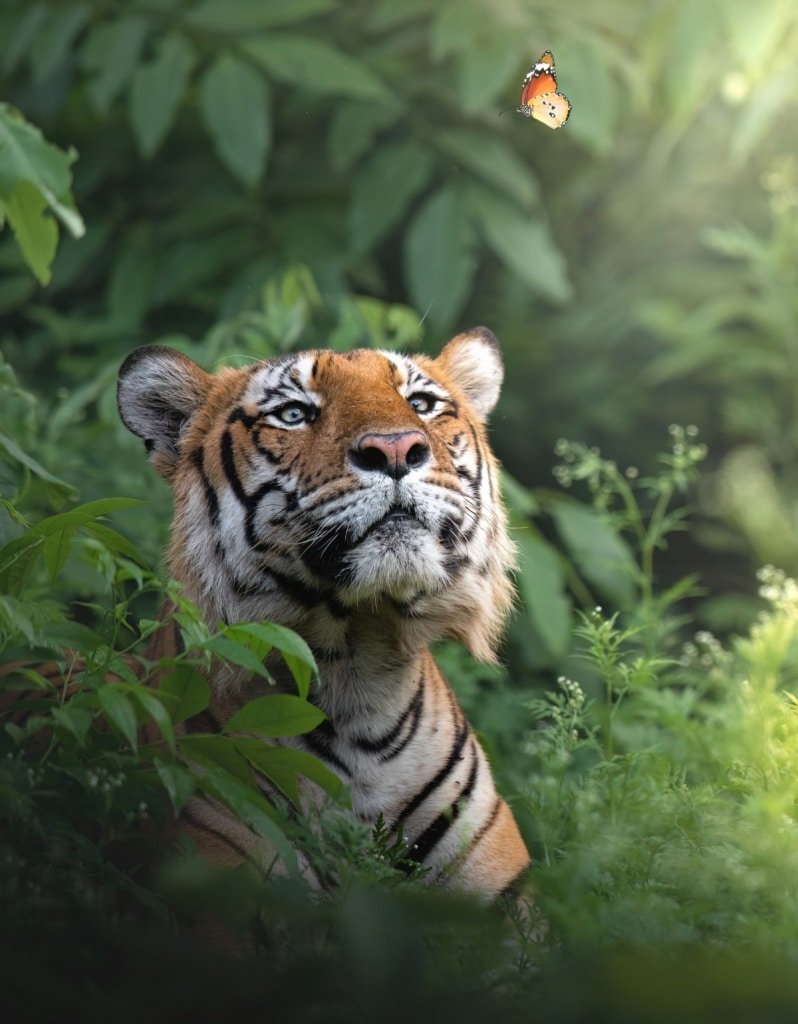
Tigers are more than just a popular emblem for conservation efforts; they play a vital role in maintaining the balance of their ecosystems. Imagine them as the top-notch gardeners of their habitats, keeping the populations of other species in check. However, due to habitat loss, poaching, and human-wildlife conflict, tigers have become endangered, with fewer than 4,000 left in the wild today. In this article, I’ll take you through the reasons behind their endangerment, the ongoing conservation efforts, and what we can do to help.
Why Are Tigers Endangered?
One of the primary reasons tigers are endangered is habitat loss. As human populations expand, forests are cleared for agriculture, urban development, and infrastructure projects. This means tigers have less space to roam and hunt. Think of it like living in a cozy apartment that suddenly gets shrunk to half its size—there just isn’t enough room to thrive. Additionally, with fewer trees and natural barriers, tigers become more susceptible to conflicts with people.
Another major issue is poaching. Tigers are hunted for their beautiful fur and body parts, which are often used in traditional medicine. The illegal wildlife trade is a billion-dollar industry that fuels this heartbreaking practice. Imagine a black market for rare art pieces; that’s similar to how poaching works, where tigers are considered valuable commodities rather than living beings. This illegal demand puts immense pressure on already dwindling populations.
Let’s not forget human-wildlife conflict. As tigers venture closer to human settlements in search of food, this can lead to confrontations that often end badly for the tiger. When farmers lose livestock to a tiger, their immediate reaction might be to protect their livelihood. It’s a harsh reality, but understanding this conflict helps us find solutions to coexist better.
The Current Status of Tiger Populations
Globally, tiger populations are split into several subspecies, each facing its challenges. There are six remaining subspecies, including the Bengal, Indochinese, Malayan, Siberian, South China, and Sumatran tiger. Each of these groups has a unique status; for instance, the Siberian tiger is often regarded as the largest and is critically endangered, with only about 500 left in the wild. Meanwhile, the Bengal tiger is the most numerous, yet still classified as endangered, with around 2,500 individuals.
Recent conservation efforts have shown some positive trends. For example, India, which is home to over 70% of the world’s wild tigers, announced a significant increase in their tiger population in 2019. This surge can be attributed to strong conservation measures, including increased patrolling of tiger reserves and community involvement in protecting these big cats.
However, it’s essential to note that while some populations are bouncing back, the overall situation remains precarious. Tigers are still on the endangered species list, and without continued efforts, they could vanish from the wild entirely. Protecting them requires a consistent commitment from governments, NGOs, and communities, working hand-in-hand for the future of our striped friends.
Global Conservation Efforts
When it comes to saving tigers, many organizations are stepping up to the plate. Projects like the Global Tiger Initiative aim to double the population of wild tigers by 2022, and while they didn’t quite hit that target, significant strides have been made. More governments are recognizing the need to protect these animals in their natural habitat. For instance, in Nepal, innovative community-based conservation programs have allowed local populations to benefit economically from preserving wildlife, rather than exploiting it.
One successful method has been the use of technology in conservation efforts. For example, camera traps are set up in tiger habitats to monitor populations and movements. This data is crucial, helping researchers understand behavior, track individual tigers, and even combat poaching. You might think of it like using GPS to navigate—these tools are essential for mapping out the best approaches to safeguard tigers.
Additionally, international cooperation has been key. Countries where tigers roam have begun working together to share knowledge and resources. This collaborative effort is vital because wildlife doesn’t recognize borders and needs a comprehensive approach to effective conservation.
How Can Individuals Contribute to Tiger Conservation?
You might be wondering how you can help save tigers from the comfort of your own home. The truth is, every small action counts. Here are a few ways you can pitch in:
- Support conservation organizations: Consider donating to organizations dedicated to tiger conservation. Groups like the World Wildlife Fund (WWF) and Panthera are constantly working to protect tigers and their habitats.
- Spread awareness: Share information on social media or talk about tigers with friends and family. The more people know about the plight of tigers, the more support they can rally for conservation efforts.
- Make responsible choices: Be mindful of the products you purchase. Avoid buying items made of tiger parts or those linked to habitat destruction, like unsustainable palm oil.
- Participate in eco-tourism: Choose travel experiences that promote tiger conservation. Many reserves offer guided tours that educate visitors while contributing to local economies and protecting wildlife.
Every little bit helps. Imagine if everyone made just one change—it would add up to a significant positive impact on tiger conservation.
Local vs. Global Conservation Efforts
While global initiatives are crucial, local conservation efforts are just as important. Often, the people who live closest to tiger habitats understand the terrain and the animals better than anyone else. These communities can play a pivotal role in ensuring the survival of tigers.
For example, community ranger programs empower locals to protect their wildlife. This creates jobs while fostering a sense of ownership and responsibility over the natural environment. On the flip side, global efforts often focus on creating large protected areas where tigers can thrive. Balancing these two approaches is essential for comprehensive conservation.
Think of it like a team sport: everyone has a role to play, whether on a local field or the bigger world stage. By integrating local knowledge with global resources, we can create a more robust strategy to save tigers.
Looking to the Future of Tiger Conservation
So, what does the future hold for tigers? Honestly, it’s uncertain, but there’s a glimmer of hope. Ongoing conservation efforts, better environmental policies, and growing public awareness can lead to positive change. As people become more conscious of the importance of biodiversity, there’s a rising tide of support for protecting these magnificent animals.
Recently, there’s been a shift in how we view conservation. Instead of merely protecting species, there’s a growing understanding of the importance of ecosystem health. By protecting tigers, we’re protecting entire habitats that support countless other species, all of which contributes to a balanced ecosystem.
Also, as we continue to develop new technologies, we may find innovative solutions to combat poaching and habitat destruction. It’s like having a toolbox that keeps getting better and more equipped to handle challenges as they arise.
In conclusion, the fate of tigers hangs in a delicate balance. By understanding the challenges they face and supporting conservation efforts, we can help secure a future where these magnificent creatures continue to roam our planet. It’s a tough journey, but every effort counts, and together, we can make a difference. Let’s keep the conversation going, learn more, and champion the cause of tiger conservation!

